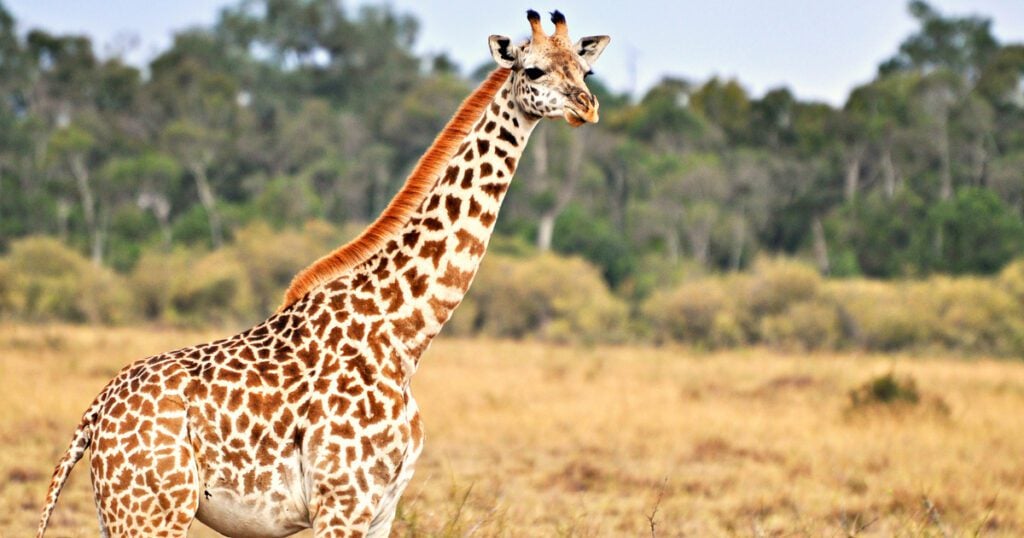Giraffes are tall African hoofed mammals that belong to the genus Giraffa. It is the world’s tallest living terrestrial animal and the largest ruminant. Giraffes were once thought to be a single species, Giraffa camelopardalis, with nine subspecies. But did you know that these animals can communicate by emitting infrared sounds?
Giraffes were often assumed to be silent due to their long necks. Researchers then discovered that giraffes generate a deep “humming” noise at a frequency of 92 hertz after 8 years of analyzing approximately 1000 hours of audio.
The Basic Anatomy and Appearance of a Giraffe
Giraffes are at least 4.3 to 5.7 meters tall when fully grown, with males being taller than females. An adult male’s average weight is 1,192 kg, while an adult female’s average weight is 828 kg. Despite its long neck and legs, the body of this creature is relatively short. The skin is mostly gray or tan, and it can grow to be 20 millimeters thick. The tail is 80 to 100 centimeters long and ends in a long, dark tuft of hair that serves as an insect repellent.
The coat is characterized by dark blotches or patches that can be orange, chestnut, brown, or nearly black, separated by light hair that is usually white or cream. Male giraffes age and become darker. It has been claimed that the coat pattern serves as camouflage in the light and shade patterns of savannah woodlands.
They are difficult to see from even a few meters away when standing among trees and bushes. Adult giraffes, on the other hand, move around to get a better view of an approaching predator, relying on their size and ability to defend themselves rather than camouflage, which may be more important for calves.
Each giraffe has a distinctive coat pattern. Some coat pattern traits are inherited by calves from their mothers, and variation in some spot traits is linked to neonatal survival. The skin beneath the blotches may function as thermoregulation windows due to the presence of complex blood vessel systems and large sweat glands. (Source: Britannica)
What Other Ways Can Giraffes Communicate?
Giraffes also communicate through their eyes and by touching other giraffes in the herd. Giraffes, as any zoo visitor will tell you, can communicate a wide range of emotions through their big brown eyes. Giraffes in the wild may use prolonged stares to warn predators to avoid young calves or to warn other herd members of danger, for example.
Even though they live in close quarters, giraffes rarely interact with one another. Although they share some characteristics with elephant herds, they lack the close-knit relationship that elephant families have. Giraffes, on the other hand, only touch on occasion. Mother giraffes may nuzzle and stroke their calves to express affection or to teach the calf where to find food or avoid danger.
Giraffes also touch each other in a ritual known as necking, which is a form of sparring between male giraffes. The goal is for one giraffe to demonstrate dominance over the other. The two giraffes stand with their feet spread apart, wrapping or rubbing their necks together. At times, the dominant dance may become more serious and rough. At times, the two male giraffes appear to lose interest and simply walk away.
(Source: Sciencing)
